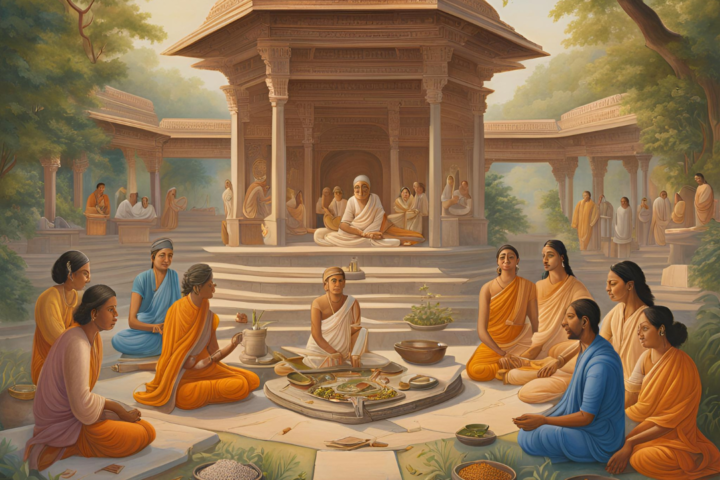Drink water frequently, like when you drink tea or warm milk, as this helps the saliva in your mouth mix with the water, which neutralizes the acids in your stomach and aids in digestion. This practice also helps improve digestion and reduce weight
Do not drink chilled water from the fridge.
Drink three to four liters of water daily.
Drink warm water on an empty stomach in the morning.
Drink water half an hour before meals, but not immediately after eating.
Do not drink water for at least half an hour after meals.
To reduce weight, drink a glass of warm water with lemon in the morning.
For weight loss, soak ajwain in water and drink it in the morning, followed by a little honey and an empty stomach.
Drinking water with sugar helps reduce body fat. Drink a glass of warm water with 15 grams of sugar added to it.
Green tea aids in weight loss by reducing digestion.
The humoral theory, which originated in ancient Greek medicine, is based on the concept of four bodily fluids or “humors” – blood, phlegm, yellow bile, and black bile. The balance of these humors is believed to determine a person’s health and personality.
In this theory, each humor is associated with a particular season and has specific qualities of hotness, coldness, dryness, and wetness. The balance of these humors is influenced by various factors such as climate, diet, occupation, geographic location, planetary alignment, sex, age, and social class.
Humoral treatments, or “regimens,” are designed to restore the proper humoral balance through bloodletting, vomits, enemas, and other purges, accompanied by diet and lifestyle changes and medications based on a person’s humoral disposition.
The humoral theory was dominant in Western medicine for over 2000 years and was one of the fundamental tenets of the teachings of Hippocrates, the “Father of Modern Medicine.”
However, with the advent of the “Doctrine of Specific Etiology” and the identification of messenger molecules like hormones, growth factors, and neurotransmitters, the humoral theory’s demise hastened.
Despite its disproval, the concept of humorism is still present in modern medical terminology, which refers to humoral immunity when discussing elements of immunity that circulate in the bloodstream, such as hormones and antibodies.
The humoral theory is also associated with the four individual psychological temperaments: melancholic, sanguine, choleric, and phlegmatic. This reflects the humoral concept that physical health and individual personality are part of the same whole.
The development of humoral theory is associated originally with Hippocrates (ca. 460–370 BCE). In the second century CE, Galen elaborated on this theory, which was further developed by Arabic writers beginning in the 9th century and by European writers beginning in the 11th.
Though several important publications, such as Andreas Vesalius’s De Humani Corporis Fabrica in 1543 and William Harvey’s De Motu Cordis in 1628, challenged aspects of humoral theory, it remained dominant among both physicians and the public through the 19th century.
Equilibrium and the Environment
Each humor is associated with one of the four seasons, and each is considered to have characteristic qualities of hotness, coldness, dryness, and wetness. Because each individual’s humoral balance is holistically connected with other phenomena—such as climate, diet, occupation, geographic location, planetary alignment, sex, age, and social class—what is healthy for one person might not be so for another.
Humoral treatments, or “regimens,” are designed to restore the proper humoral balance by bloodletting, vomits, enemas, and other purges, and they are accompanied by diet and lifestyle changes and by medications that are based on a person’s humoral disposition.
Anything that upsets this equilibrium—such as a change in season or climate, a sudden shift in the weather, or the onset of puberty—was a possible health crisis.
Disease and Humoral Theory
In humoral theory, individual diseases did not exist in the way that we understand them today. Diseases were not seen as forces or entities separate from the body, but instead were understood as states of bodily imbalance.
Physicians trained in humoral theory relied not only on a knowledge of medical texts, but also on personal understanding of the patient; on the inspection of blood, urine, and other fluids produced by the body; and on the patient’s description of his or her symptoms.
Preventative treatment was also of central importance, and public health practices developed in the early 19th century were based in part on basic humoral presuppositions—individual lifestyle, and health.
These ideas were often criticized, however, especially after mid–century.
Bloodletting
Bloodletting as a treatment was closely associated with humoral theory. In cases of an overabundance of one or another humor (called “plethora,” “congestion,” “inflammation,” and a variety of other letting blood was believed to allow the body to reach a healthier balance.
How much bleeding was done and where in the body the blood came from could change depending on individual conditions and on Bloodletting was also done seasonally as a tonic.
After the first decades of the 19th century, bloodletting was discredited in many parts of Europe and the United States, though the practice continued well past mid–century.
Other Traditions
Medical traditions in other cultures, such as Ayurvedic medicine in India, traditional Chinese medicine, and Native American medicine, are also based in versions of humoral theory.
Even today, our health is still often evaluated in terms of the analysis of fluids like urine and blood.



